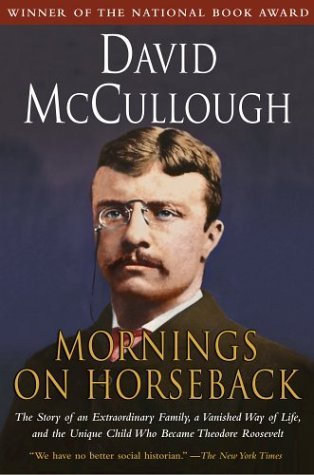Reported by Ambrea
This
week, Nevermore focused on nonfiction and history, starting with The Free State of Jones: Mississippi’s Longest Civil War by
Victoria Bynum. A historian with family
ties to Jones County, Bynum delves deep into the history of the Mississippi
Valley with her narrative and explores the startling social upheaval that
gripped Jones County during the Civil War—and what happened in the
aftermath. Starting in 1863, the Knight
Company—named for their fearless leader, Confederate deserter Newton Knight—set
up camp in the swamps of the Leaf River region and declared themselves the Free
State of Jones, a lone community intent on the freedom of all men. Although skirmishes between Newton Knight and
the Confederacy were legendary, especially since Knight was never captured, one
of the most lasting legacies of the Knight Company came from the mixed-race
community that endured long after the war ended. An intriguing and compelling narrative about
the lingering effects of the Civil War, The
Free State of Jones was an instant hit for our reader. He said it was fascinating to read about
Jones and his exploits, and it was interesting to see the impact that the mixed-race
community of Jones had on the rest of the community and, incredibly, the legal
precedents of the county. Our reader was
incredibly pleased with Bynum’s work and highly recommended it (and the
upcoming movie) to his fellow Nevermore members.
 |
| Eleanor Roosevelt, courtesy of the FDR Library |
Our
next reader rediscovered her book from her bookshelves, taking another
opportunity to read Eleanor Roosevelt’s India
and the Awakening East. A compelling
narrative about Eleanor Roosevelt’s travels through India after World War II, India and the Awakening East is an
intriguing and thought-provoking piece on the social growth of India, Lebanon,
and many other eastern countries. Part
travel journal and part political/social commentary on the state of eastern
nations, Eleanor Roosevelt’s book is a dynamic book that our reader said she
enjoyed immensely. She considered it
compelling and brilliant, filled with Eleanor’s passion for humanity and her
zeal for humanitarian work, and she said she especially loved the insightful
pictures that helped depict the conditions of the time and offered further
insight into Eleanor Roosevelt’s travels.
She said it was incredibly insightful, and she loved reconnecting with
an old book she’d almost forgotten.
Next,
Nevermore looked at The Invention of Wings
by Sue Monk Kidd, a sweeping novel about the Grimke sisters—Sarah and
Angelina—and their gradual journey toward becoming abolitionists and
suffragists. Based on characters both
real and invented, The Invention of Wings
tells the story of Hetty “Handful” Grimke, an urban slave in Charleston who
serves in the Grimke household. Given to
Sarah on her eleventh birthday (Hetty was only ten-years-old, at the time),
Handful and Sarah forge a remarkable and unusual relationship as, for the next
thirty-five years, they attempt to forge their own destinies and
identities. Our reader really enjoyed
reading about the Grimke sisters and Handful, and she highly recommended it to
other history lovers. Thorough and
detailed, The Invention of Wings is
an excellent piece of fiction that combines a thoughtful narrative with a close
observation of facts, breathing life into individuals known only from the
history books. In fact, our reader said,
“If you like historical fiction, you’ll [definitely] like this.”
Our
readers also explored The Light of Other
Days by Arthur C. Clarke and Stephen Baxter. Although Clark and Baxter’s novel falls under
science fiction, it’s an intriguing book that discusses the connectivity of a
future world—a not-so-far-in-the-future world—where the barriers of space and
time are no longer a matter of fact, but a malleable principal that breaks down
the boundaries of privacy and, more importantly, time. Suddenly, people are able to see one another
at all times and, finally, look into the distant past to view history as it
unfolds. An interesting mix of
historical and science fiction, The Light
of Other Days is a fascinating story that’s “really about society and the
effects of technology on it,” according to our reader. He said it was an interesting and compelling
novel that dealt with the disappearance of privacy, an idea which he said is
very relevant to the modern world, as well as other fascinating scientific
concepts. Overall, he highly recommended
it to his fellow readers as a highly thoughtful and incredibly insightful
novel.
Last,
Nevermore looked at Full Body
Burden: Growing Up in the Nuclear Shadow
of Rocky Flats by Kristen Iverson.
Iverson grew up in a small Colorado town close to Rocky Flats, a secret
nuclear facility that produced weapons for the U.S. Government under the guise
of a simple chemical company. But as
strange cases of cancer and diseases began to crop up all over town, people,
like Iverson, began to question what happened at Rocky Flats—and discovered the
terrible truth behind the plant which stretched its shadow across the
county. Filled with EPA and FBI documents,
interviews of local citizens affected by Rocky Flats, and pages from a
class-action lawsuit, Full Body Burden
combines the best of investigative journalism with the wrenching testimony of a
witness. Not only does it expose the
dangers of radiation, it also exposes the dangers of secrets—and, sometimes,
putting trust in a government that doesn’t always have its citizens’ best
interests in mind, our reader noted. She
said Iverson’s memoir is a fascinating window into the depth of secrets and
deceit that were practiced at Rocky Flats.
It reminded her of Oakridge, offering an eerie parallel to the secrecy
of a similar facility that’s so close to home.
Overall, she said she enjoyed Full
Body Burden and she feels she learned a lot from Iverson’s and her
neighbors’ experiences.











